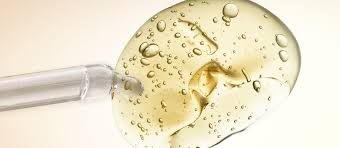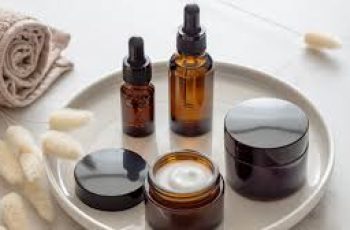
Can You Use Retinol with Ferulic Acid? An In-Depth Guide
Skincare can feel like a complex science with so many ingredients and formulas to understand.
Even seasoned skincare enthusiasts can get overwhelmed, especially when faced with hard-to-pronounce names and a flood of new products.
Modern skincare isn’t just about layering creams from thinnest to thickest anymore. Today, it’s about understanding how active ingredients interact and whether they can work together harmoniously. Applying two powerful ingredients in the wrong way can reduce their effectiveness or even irritate your skin.
One common question that pops up is: can you use retinol with ferulic acid? These two ingredients are well-loved in skincare for their powerful benefits, but do they play well together?
Let’s dive in and explore everything you need to know.
What is Ferulic Acid?
Ferulic acid is a natural antioxidant found in many anti-aging skincare products and supplements. It occurs naturally in foods such as oats, rice, eggplant, and bran.
Its primary role is to protect the skin from damage caused by free radicals.
Free radicals are unstable molecules generated by UV rays, pollution, and even indoor heating, which can damage skin cells and speed up aging.
Ferulic acid helps neutralize these harmful molecules before they can cause significant harm.
But ferulic acid doesn’t just protect your skin on its own—it actually enhances other antioxidants. For example, it boosts the power of vitamins A, C, and E, helping them stay stable and work more effectively.
The combo of ferulic acid and vitamin C is particularly famous. Ferulic acid stabilizes vitamin C and improves its ability to protect the skin from sun damage, boosting its photoprotective effect.
Using ferulic acid regularly can help reduce fine lines, wrinkles, and signs of aging by repairing existing skin damage and improving skin health overall.
The result? A more radiant, youthful complexion with a natural glow.
If you want a deeper dive, there’s plenty of info on ferulic acid available in skincare guides and blogs like Skin School.
What is Retinol?
Retinol is one of the most well-known skincare ingredients and for good reason. It’s a form of vitamin A and is often hailed as a superstar in fighting signs of aging.
Our skin naturally produces retinol, but this production slows down after the age of 25. That’s why many people turn to retinol products to boost their skin’s renewal process.
Retinol works by speeding up skin cell turnover. This means it helps shed old, damaged cells and encourages new, healthy ones to come to the surface.
It also boosts collagen production, which firms the skin and reduces wrinkles.
In addition to anti-aging, retinol is effective at repairing skin damage caused by sun exposure. Many users report smoother texture, clearer pores, and a more even skin tone after consistent use.
However, retinol is a potent ingredient and can cause side effects like redness, irritation, itching, and dryness if introduced too quickly or used improperly.
That’s why starting slow is key—maybe once or twice a week—and gradually increasing frequency as your skin builds tolerance.
For a full overview of how retinol works and how to use it safely, check out detailed blog posts focused solely on retinol.
Can I Use Retinol with Ferulic Acid?
Yes, you can! In fact, using retinol and ferulic acid together creates a powerful duo that complements each other beautifully.
Retinol works on renewing skin cells and boosting firmness, while ferulic acid helps retinol penetrate deeper into the skin layers. This teamwork enhances collagen production and skin repair even more.
When combined, these ingredients can improve your complexion’s luminosity, texture, and overall health. Together, they fight aging signs while protecting your skin from environmental damage.
Just remember to pay attention to how your skin reacts, especially if you are new to either ingredient.
What Can Be Used With Ferulic Acid?
One of ferulic acid’s biggest perks is that it works well with other antioxidants, boosting their effectiveness.
For example, formulations often pair ferulic acid with vitamin C and vitamin E to maximize antioxidant protection.
Because it stabilizes these vitamins, ferulic acid enhances their ability to reduce oxidative stress and sun damage.
When adding ferulic acid to your routine, it’s always a good idea to consult with a dermatologist or skincare professional.
They can help tailor your regimen to your specific skin type and goals, ensuring you don’t experience unwanted reactions.
What Acid Goes Well With Retinol?
While retinol is powerful, it’s often best paired with gentle hydrators rather than strong acids. Hyaluronic acid is a fantastic partner because it hydrates and locks moisture into the skin.
This moisturizing effect helps prevent the dryness and irritation sometimes caused by retinol, allowing you to enjoy retinol’s benefits comfortably.
On the other hand, acids like glycolic acid, salicylic acid, and lactic acid are exfoliants that increase skin cell turnover.
Using them alongside retinol can over-exfoliate your skin, disturbing its natural pH and stripping essential oils.
This can lead to redness, flaking, irritation, and discomfort. For these reasons, it’s generally advised to use potent exfoliating acids on different nights than retinol, or alternate their usage entirely.
Can I Use Retinol Every Night?
Eventually, many people do use retinol every night, but only after gradually building up skin tolerance.
To start, apply retinol once or twice a week in your evening routine. Monitor how your skin feels, then slowly increase to every other night or even nightly, depending on your skin’s reaction and the product’s strength.
Some retinol formulas are milder and designed for nightly use, while others are more potent and better suited for less frequent application.
Using retinol consistently but carefully will yield the best results without causing unnecessary irritation.
How to Layer Retinol and Ferulic Acid in Your Routine
To get the most from both ingredients, it’s important to apply them correctly.
Ferulic acid is typically found in serums, often paired with vitamin C and vitamin E, and is usually applied in the morning. Its antioxidant protection helps shield your skin from daily environmental stressors.
Retinol, being sensitive to sunlight, is best used at night. After cleansing, apply retinol to dry skin, then follow with a moisturizer to lock in hydration.
If you want to use both in the same routine, experts recommend ferulic acid in the morning and retinol in the evening. This approach maximizes their benefits without risking irritation.
Final Thoughts
Both retinol and ferulic acid are powerhouse ingredients that can transform your skin. They complement each other well and, when used properly, can give you a radiant, youthful, and healthy complexion.
Take your time introducing each ingredient, listen to your skin, and consult a skincare professional if you’re unsure. Patience and consistency are key to successful skincare.
If you have more questions or want personalized advice, feel free to reach out on Instagram or other social platforms. Skincare is a journey, and you don’t have to walk it alone.


